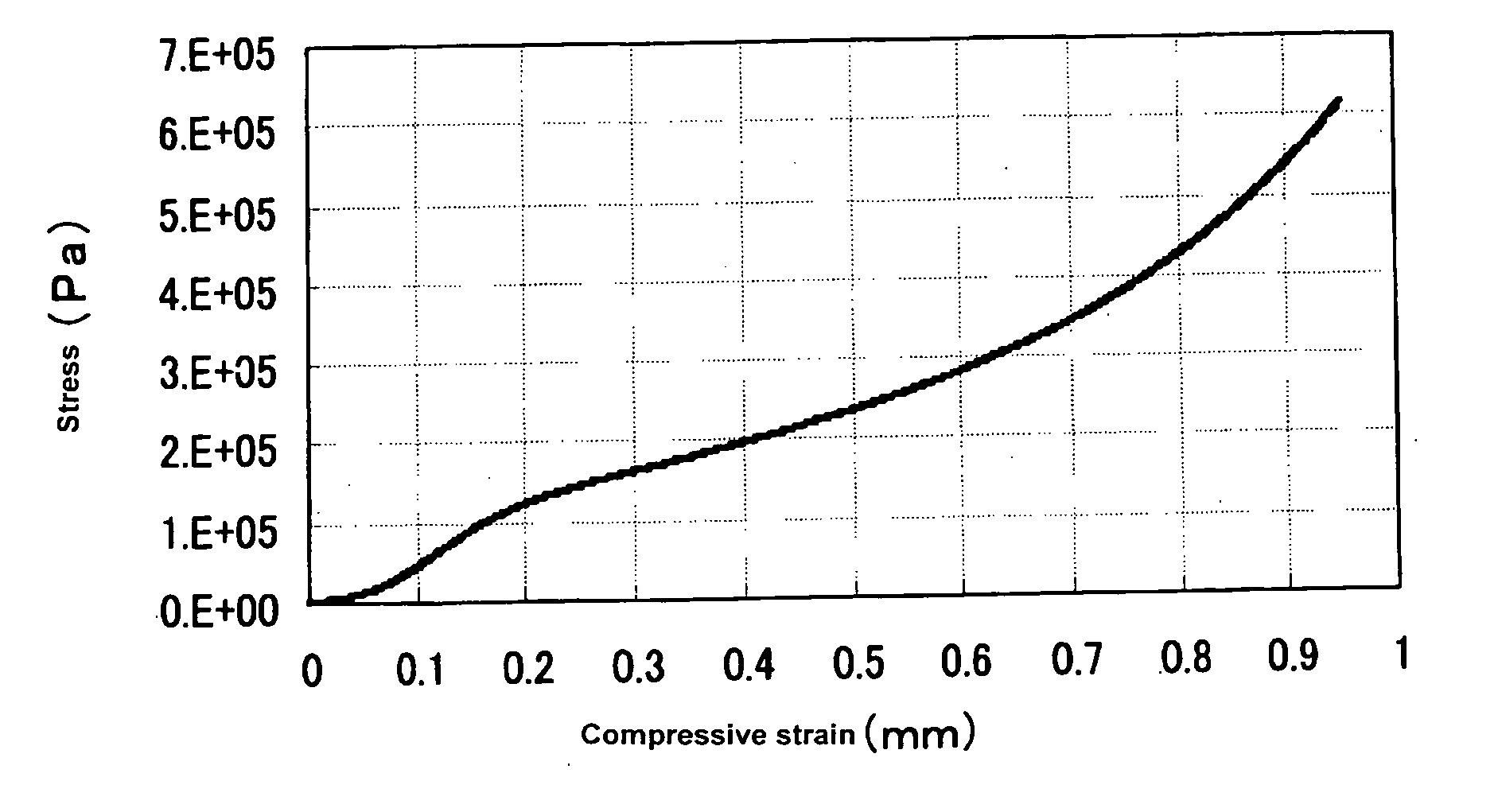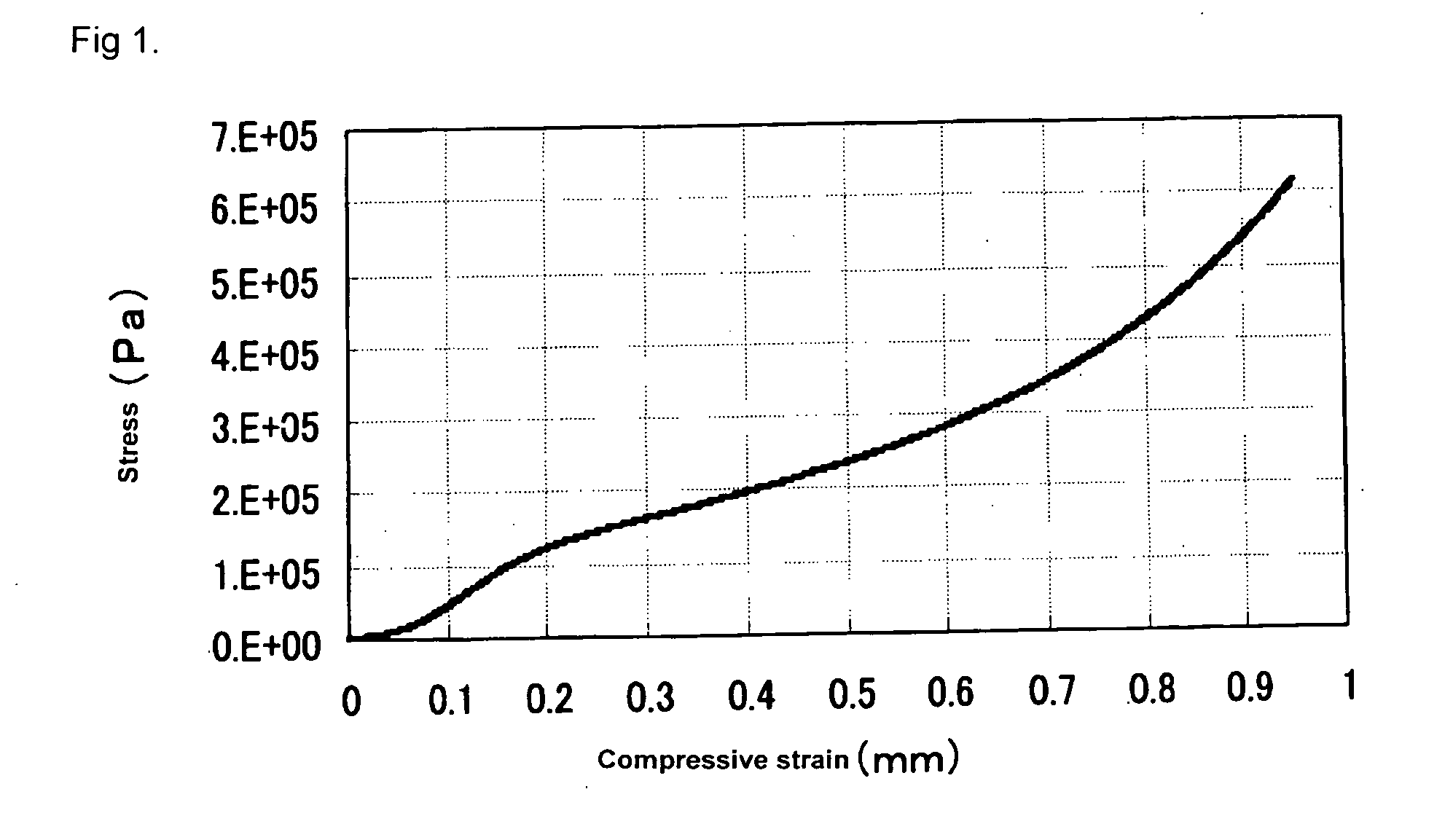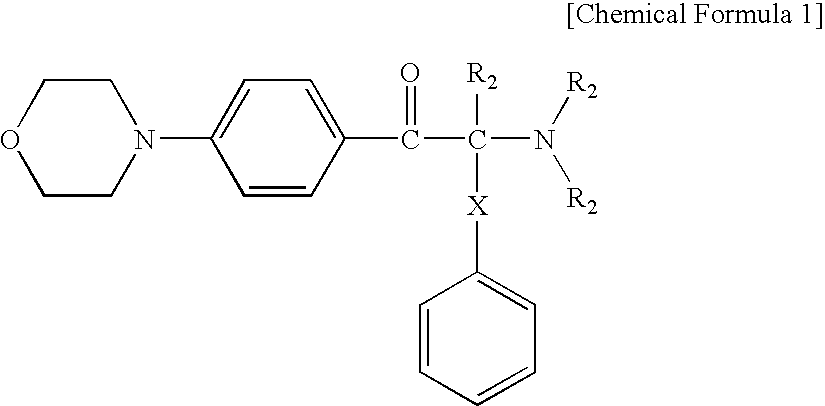Cushioning Material for Printing
- Summary
- Abstract
- Description
- Claims
- Application Information
AI Technical Summary
Benefits of technology
Problems solved by technology
Method used
Image
Examples
examples
[0144]The present invention will hereinafter be described in further detail by Examples and Comparative Examples. They are however exemplary only and the present invention is not limited by the following Examples and the like. Those skilled in the art can perform the present invention after giving various modifications to the following Examples. Such modifications are all included in the scope of the claims of the present invention.
examples i-1 to i-9
and Comparative Examples I-1 to I-9
[0145]Measurement methods and evaluation methods employed in Examples I-1 to I-9 and Comparative Examples I-1 to I-9 will next be described
(I-1) Measurement of Viscosity
[0146]The viscosity of a photosensitive resin composition was measured at 20° C. by using a B type viscometer (“B8H model”, trademark, product of Tokyo Keiki Kogyo Co., Ltd. / Japan). The viscosity of a resin was measured at 50° C.
(I-2) Measurement of Number-Average Molecular Weight of Resin (a)
[0147]Since the polydispersity index (Mw / Mn) as determined by GPC exceeded 1.1, the number-average molecular weight Mn as determined by GPC was used as the average molecular weight of Resin (a). Specifically, the number-average molecular weight of the resin (a) was the value converted by gel permeation chromatography (GPC) using polystyrene having a known molecular weight. The number-average molecular weight was measured using a high performance GPC apparatus (“HLC-8020”; trademark, product of ...
example i-1
Preparation of Resin (a1)
[0190]For use as the resin (a), a resin (a1) having, at the end thereof, a methacrylic group (about 1.7 polymerizable unsaturated groups per molecule) and having a number-average molecular weight of about 8000 was prepared by adding, to a 2-L separable flask equipped with a thermometer, a stirrer, and a reflux apparatus, 875 g of polycarbonate diol “PCDL T4672” (trademark; product of Asahi Kasei Corporation, number-average molecular weight: 2063, OH value: 54.4) and 53.7 g of tolylene diisocyanate, reacting the resulting mixture for about 3 hours under heating at 80° C., adding 36.9 g of 2-methacryloyloxy isocyanate, and then, reacting the resulting mixture further for about 3 hours. The resulting resin was like sugar syrup at 20° C. It flowed by the application of an external force and did not restore the original shape even after removal of the external force.
[0191]In the 1H-NMR spectroscopy (nuclear magnetic resonance spectroscopy using a hydrogen atom as...
PUM
| Property | Measurement | Unit |
|---|---|---|
| Temperature | aaaaa | aaaaa |
| Length | aaaaa | aaaaa |
| Length | aaaaa | aaaaa |
Abstract
Description
Claims
Application Information
 Login to View More
Login to View More - R&D
- Intellectual Property
- Life Sciences
- Materials
- Tech Scout
- Unparalleled Data Quality
- Higher Quality Content
- 60% Fewer Hallucinations
Browse by: Latest US Patents, China's latest patents, Technical Efficacy Thesaurus, Application Domain, Technology Topic, Popular Technical Reports.
© 2025 PatSnap. All rights reserved.Legal|Privacy policy|Modern Slavery Act Transparency Statement|Sitemap|About US| Contact US: help@patsnap.com



